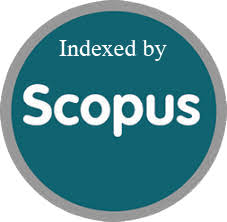A comparative Evaluation of Swarm Intelligence Algorithm Optimization: A Review
Abstract
Swarm intelligence (SI), an important aspect of artificial intelligence, is increasingly gaining popularity as more and more high-complexity challenges necessitate solutions that are sub-optimal but still feasible in a fair amount of time. Artificial intelligence that mimics the collective behavior of a group of animals is known as swarm intelligence. Attempting to survive. It is primarily influenced by biological systems. The main aim of our article is to find out more about the guiding principle, classify possible implementation areas, and include a thorough analysis of several SI algorithms. Swarms can be observed in ant colonies, fish schools, bird flocks, among other fields. During this article, we will look at some Swarm instances and their behavior. We see many Swarm Intelligence systems, like Ant colony Optimization, which explains ant activity, nature, and how they conquer challenges; in birds, we see Particle Swarm Optimization is a swarm intelligence-based optimization technique, and how the locations must be positioned based on the three concepts. The Bee Colony Optimization follows, and explores the behavior of bees, their relationships, as well as movement and how they work in a swarm. This paper explores some of the methods and algorithms.
Downloads

Copyright (c) 2021 Shahab Kareem

This work is licensed under a Creative Commons Attribution-ShareAlike 4.0 International License.
Authors who publish with this journal agree to the following terms:
- Authors retain copyright and grant the journal right of first publication with the work simultaneously licensed under a Creative Commons Attribution-ShareAlikel 4.0 International (CC BY-SA 4.0) that allows others to share the work with an acknowledgement of the work's authorship and initial publication in this journal.
- Authors are able to enter into separate, additional contractual arrangements for the non-exclusive distribution of the journal's published version of the work (e.g., post it to an institutional repository or publish it in a book), with an acknowledgement of its initial publication in this journal.
- Authors are permitted and encouraged to post their work online (e.g., in institutional repositories or on their website) prior to and during the submission process, as it can lead to productive exchanges, as well as earlier and greater citation of published work (See The Effect of Open Access).




.png)
.png)
.png)
.png)
.png)
